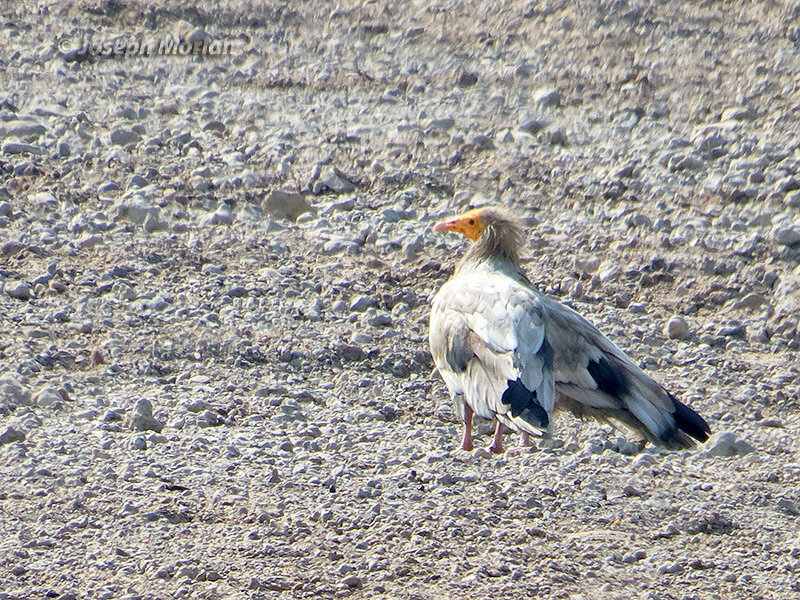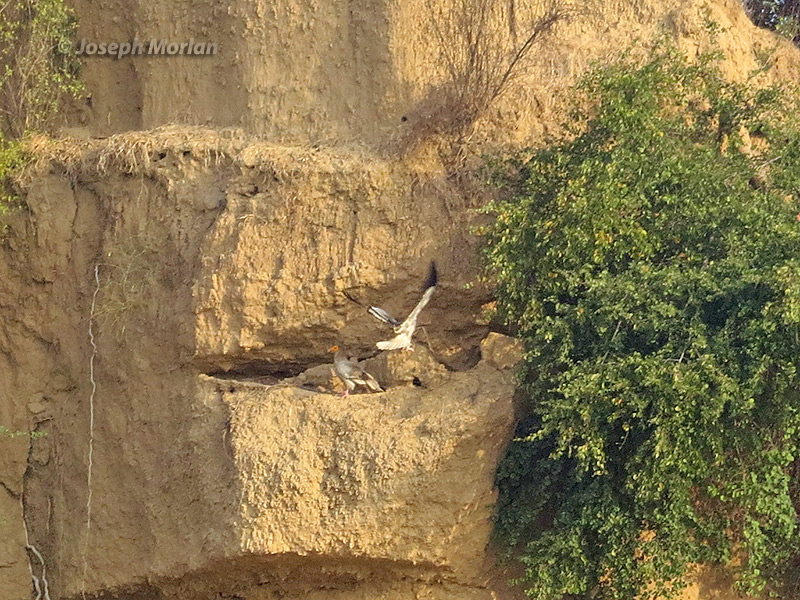

Egyptian Vultures take five years to reach full maturity. These are adults Three subspecies are recognized with N. p. ginginianus being resident in most of India. It is characterized by its all yellow bill as seen here. This species is listed as endangered by IUCN primarily because of recent precipitous declines in India caused by the veterinary drug Diclofenac. However these birds continue to decline over much of the rest of their range in southern Europe and Africa as well. Egyptian Vultures are famous for throwing stones to break open the eggs of Ostriches and recently they have been observed breaking the eggs of other vulture species. This is the only species in the genus Neophron which derives from a story in Greek mythology in which Neophron was changed into a vulture by Zeus. Canon PowerShot SX50 HS.
References:
BirdLife International (2016) Species factsheet: Neophron percnopterus. Downloaded from http://www.birdlife.org on 23/05/2016.
Clark, William S.; Schmitt, N.J. (1998). Ageing Egyptian Vultures. Alula 4: 122–127. [PDF].
Jobling, J. A. (2016). Key to Scientific Names in Ornithology. In: del Hoyo, J., Elliott, A., Sargatal, J., Christie, D.A. & de Juana, E. (eds.) (2016). Handbook of the Birds of the World Alive. Lynx Edicions, Barcelona. (retrieved from www.hbw.com on 23 May 2016).
Rasmussen, P.C. & Anderton, J.C. (2005) Birds of South Asia. The Ripley Guide. Vols. 1 and 2. Smithsonian Institution & Lynx Edicions, Washington, D.C. & Barcelona.